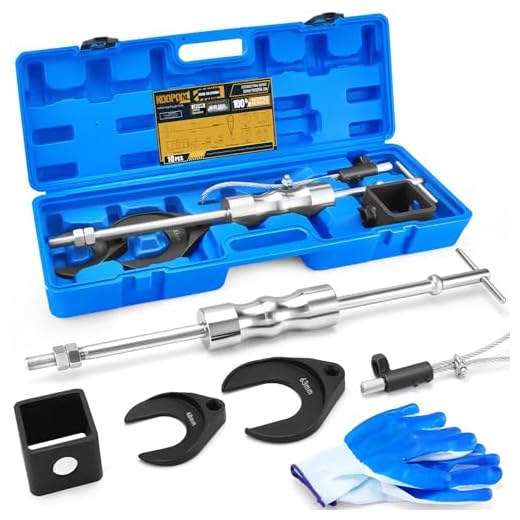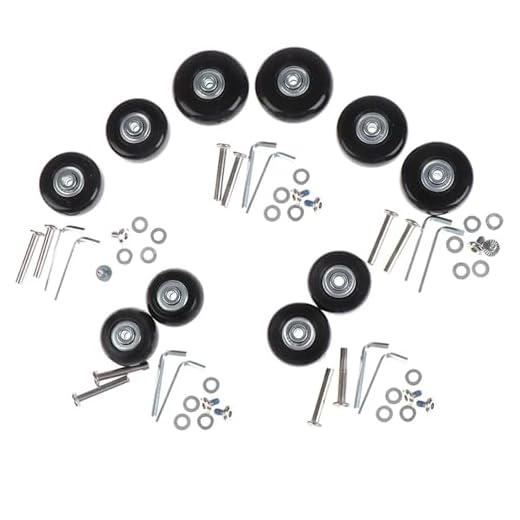

To tackle the challenge of detaching the rod from your rolling bag’s carry-on, ensure you have a flathead screwdriver and a pair of pliers ready. Begin by inspecting the wheel assembly for any screws or fasteners that may be holding the components together. Remove these with your screwdriver to create access to the interior mechanism.
Next, gently pull on the wheel to separate it from the bag’s frame while simultaneously examining the rod for any additional clips. If clips are present, use the pliers to carefully unclip them without damaging the surrounding parts. After ensuring all attachments are free, the rod should slide out smoothly from the housing.
Should you encounter resistance, check for hidden screws or additional clips that may remain unnoticed. Applying a little lubricant to the rod can also make extraction easier, allowing it to glide out with minimal effort. Once the rod is free, inspect it for any signs of wear or damage that may require replacement to ensure optimal performance in the future.
Identifying the Type of Axle in Your Luggage Wheel
Check the design of the wheel hub to determine the axle type. Most designs feature either a solid or hollow structure, which indicates the hardware involved in securing the wheel to the frame.
Types of Connectors to Look For
- Screw and Nut: Typically, these systems feature a visible screw on one side. Unscrewing it may allow for extraction.
- Snap-in: A type that often relies on a simple push mechanism, where the wheel can be easily released by pressing a designated area.
- Pin: Look for a small pin that might hold the wheel in place. This often requires additional tools for removal.
Material Assessment
Understanding the material composition can aid in your approach. Metal axles often indicate greater durability, while plastic ones might require more careful handling to avoid breaking.
Checking for any specific manufacturer markings or identifiers can also provide insight into the type of connection used. Reference any included manuals or product specifications for guidance on disassembly.
Tools Needed for Axle Extraction
For efficient axle extraction, having the right tools is crucial. Gather the following items before starting the process:
- Screwdrivers: A flathead and a Phillips screwdriver to handle screws securing the wheel assembly.
- Pliers: Useful for gripping and pulling out stubborn components.
- Wrench Set: Depending on the wheel type, you may need various sizes to loosen nuts or bolts.
- Rubber Mallet: Helpful for gentle tapping to dislodge parts without causing damage.
- Safety Glasses: Protect your eyes from debris during the extraction process.
- Grease: Lubrication aids in easing the extraction of friction-fit parts.
Where to Source the Tools
Look for these tools at local hardware stores or check online resources. For those visiting Athens, you might find useful equipment at places close to best luggage storage athens.
For further insights into biosciences equipment, explore resources at best umbrella programs for biosciences.
Step-by-step process for taking out the central rod
Begin with inspecting the interior of your suitcase for any visible elements securing the central rod. Commonly, you may find a small clip or screw that needs to be unscrewed or pressed. Use your tool to detach this securing component first.
Extracting the component
Next, gently grasp the wheel and pull it away from the structure. If it resists, check for additional fasteners that may not be immediately apparent. Once free, locate the rod. It often requires slight maneuvering to withdraw it cleanly.
Final checks
Upon withdrawal, inspect the rod for wear or damage. This moment is ideal for ensuring replacement parts if needed. Having all tools ready and understanding the process beforehand can minimize stress during this task. For handy domestic tips, consider visiting this link about how to keep dog from digging under privacy fence.
Reassembling the Luggage Wheel After Axle Removal
Begin by positioning the wheel securely on a flat surface to ensure stability during assembly. Align the wheel components closely, ensuring any internal mechanisms are appropriately positioned.
Step-by-Step Assembly
1. Insert the axle through the wheel center, ensuring it passes through any washers or spacers. This ensures proper rotation alignment.
2. Firmly attach the retaining clip or cap, securing the axle in place. Ensure it clicks or locks properly to prevent any loosening during use.
3. If applicable, reattach the brake mechanism, aligning it with the intended mounting points to guarantee functionality.
4. Rotate the wheel manually to check for smooth operation. If resistance occurs, reassess alignment and component seating.
Final Check
Inspect all attached parts for tightness and alignment. It’s vital to ensure that everything is secured correctly to avoid future issues during travel. Test the wheel by giving it a gentle spin, confirming that it operates effortlessly.








